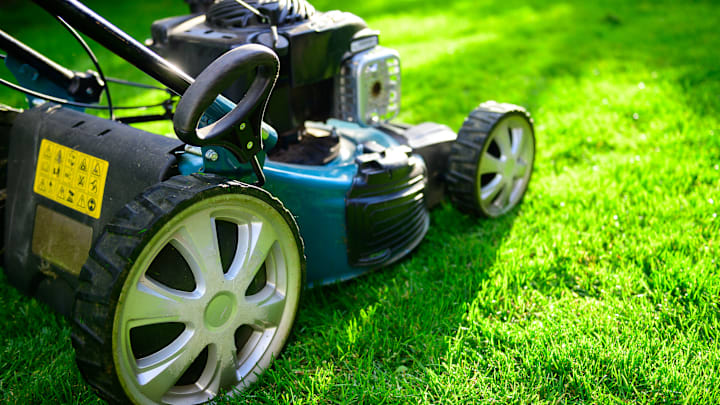Since postwar suburbia began spreading across America in the 1950s, lawns have been a source of pride for homeowners. It’s a way to say that you tend to your property (or that you hire a neighborhood kid to do it for you). While mowing seems like a pretty routine task that’s mostly foolproof, there’s actually a proper way to achieve a better-looking, healthier yard.
Grass Length Matters
You may be tempted to turn over your lawnmower engine and proceed to hack away at your grass indiscriminately. While this works in the sense it will keep you from getting a homeowner’s association letter, it’s not great for your grass. What you should be focusing on is grass length and the angle of the cut.
Many people like to cut the grass short in the hopes they can prolong periods between mowing, a practice known as “scalping the lawn.” But very short grass presents a problem: The blades aren’t long enough to properly absorb the sun’s rays, depriving them of nutrients and leaving brown, patchy, brittle grass. It also means the yard itself is more susceptible to weed overgrowth.

Instead, it’s better to give grass a trim rather than a full chop. Aim to take off no more than 1 inch (or one-third) of the grass at a time, leaving the blades anywhere between 2 inches and 3.5 inches long. While it does mean you’ll be mowing more often, it also reduces the time you’ll spend on grass repair or weeding. (Virtually all mowers allow users to adjust the height of the cut using a manual lever. Check your instruction manual.)
You may even consider keeping your grass higher under trees. That’s because grass there is competing for nutrients with tree roots, thus a larger blade surface area gives it a fighting chance.
There’s a benefit to keeping grass taller beyond its overall health. Higher grass is often softer, which can be an advantage for kids playing (and falling) in a yard and for adults walking on it.
The Right Angle of Attack
Suppose you have a lawn butting up against a driveway. You start at the end, then follow the same zig-zag pattern until you reach the edge of your property line. It gets the job done, but there’s a consequence: The grass will “remember” that it’s being trimmed from the same angle every time and will begin growing in the opposite direction, giving your lawn the appearance of a slight tilt or lean.
It's better to alternate angles, coming at the lawn from the opposite direction the next time you mow. You can also go horizontally one week and vertically the next, or even mow in circles. In addition to making the grass appear more uniform and rigid, it will also help prevent soil compaction or ruts from developing in the ground.
More Mowing Tips to Keep in Mind

Try not to mow wet grass, which isn’t standing upright and results in a poor cut. Mowing when grass is wet or damp can also damage the roots and cause clumps to form in and around the mower blade.
It’s usually better to eject grass clippings back into the yard rather than collect them in a bag. Cut grass is full of nutrients that can enrich the lawn. While this can sometimes result in lumps of dead grass, you won’t see it as often when you’re trimming rather than hacking away at an overgrown lawn. If you do, the piles can easily be raked and distributed across the surface.
The timing of a mow also matters—not just to the grass, but to you. Mowing in the morning or early evening avoids the afternoon heat, which can “stress” the grass being trimmed (and can cause heat exhaustion in the homeowner). If you have a choice, evening is better, as morning grass can still be a little damp from dew or moisture.
It’s also a good idea to keep your mower blades sharp. This can be dangerous to do yourself, but many lawnmower repair shops should be able to perform sharpening and other maintenance services.
Discover More Ways to Live Smarter:
